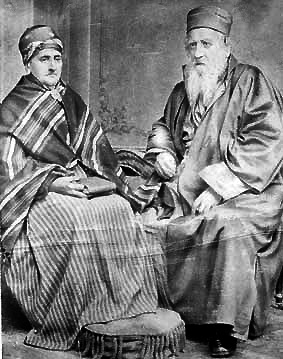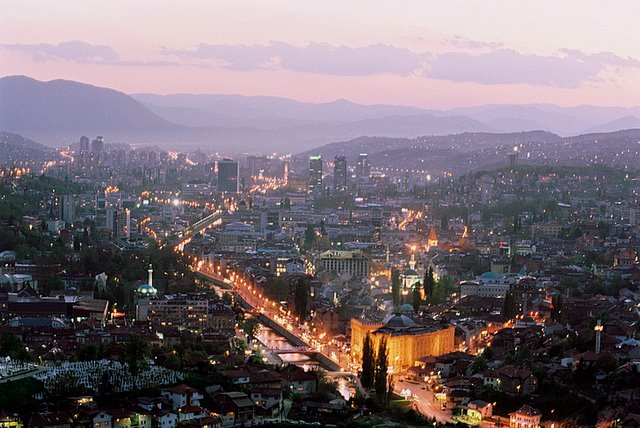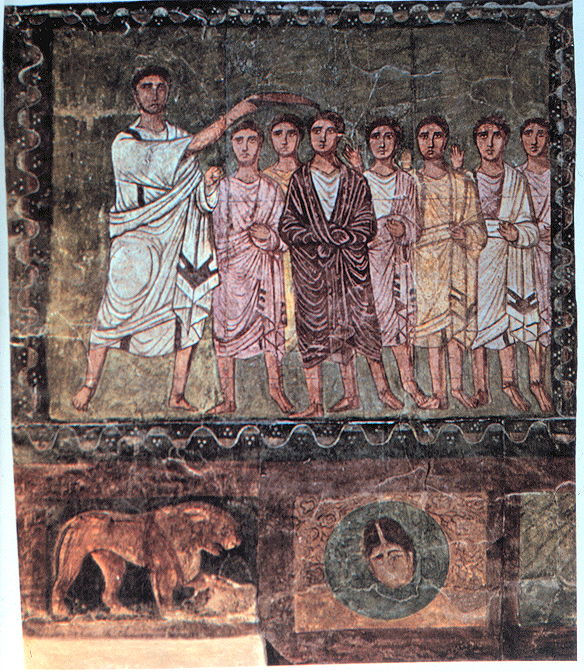|
Judah Ben Solomon Hai Alkalai
Judah ben Solomon Chai Alkalai (1798 – October 1878) was a Sephardic Jewish rabbi, and one of the influential precursors of modern Zionism along with the Prussian Rabbi Zvi Hirsch Kalischer. Although he was a Sephardic Jew, he played an important role in a process widely attributed to the Ashkenazi Jews. Alkalai became noted through his advocacy in favor of the restoration of the Jews to the Land of Israel. By reason of some of his projects, he may justly be regarded as one of the precursors of the modern Zionists such as Theodor Herzl. Biography Yehuda Alkalai was born in Sarajevo in 1798. At that time Bosnia was ruled by the Ottoman Empire. He studied in Jerusalem, which also belonged to the Ottoman Turkish Empire, under different rabbis and came under the influence of the Kabbalah. In 1825 he became reader and teacher at the Sephardic community of Semlin, and then its rabbi a few years later. Semlin, today's Zemun district of the Serbian capital Belgrade, was at that time p ... [...More Info...] [...Related Items...] OR: [Wikipedia] [Google] [Baidu] |
Sarajevo
Sarajevo ( ; cyrl, Сарајево, ; ''see Names of European cities in different languages (Q–T)#S, names in other languages'') is the Capital city, capital and largest city of Bosnia and Herzegovina, with a population of 275,524 in its administrative limits. The Sarajevo metropolitan area including Sarajevo Canton, Istočno Sarajevo, East Sarajevo and nearby municipalities is home to 555,210 inhabitants. Located within the greater Sarajevo valley of Bosnia (region), Bosnia, it is surrounded by the Dinaric Alps and situated along the Miljacka River in the heart of the Balkans, a region of Southern Europe. Sarajevo is the political, financial, social and cultural center of Bosnia and Herzegovina and a prominent center of culture in the Balkans. It exerts region-wide influence in entertainment, media, fashion and the arts. Due to its long history of religious and cultural diversity, Sarajevo is sometimes called the "Jerusalem of Europe" or "Jerusalem of the Balkans". It is o ... [...More Info...] [...Related Items...] OR: [Wikipedia] [Google] [Baidu] |
Kabbalah
Kabbalah ( he, קַבָּלָה ''Qabbālā'', literally "reception, tradition") is an esoteric method, discipline and Jewish theology, school of thought in Jewish mysticism. A traditional Kabbalist is called a Mekubbal ( ''Məqūbbāl'' "receiver"). The definition of Kabbalah varies according to the tradition and aims of those following it, from its origin in medieval Judaism to its later adaptations in Western esotericism (Christian Kabbalah and Hermetic Qabalah). Jewish Kabbalah is a set of esoteric teachings meant to explain the relationship between the unchanging, eternal God in Judaism, God—the mysterious ''Ein Sof'' (, ''"The Infinite"'')—and the mortal, finite universe (God's Genesis creation narrative, creation). It forms the foundation of Mysticism, mystical religious interpretations within Judaism. List of Jewish Kabbalists, Jewish Kabbalists originally developed their own transmission of Primary texts of Kabbalah, sacred texts within the realm of Jewish traditio ... [...More Info...] [...Related Items...] OR: [Wikipedia] [Google] [Baidu] |
Judaeo-Spanish
Judaeo-Spanish or Judeo-Spanish (autonym , Hebrew alphabet, Hebrew script: , Cyrillic script, Cyrillic: ), also known as Ladino, is a Romance languages, Romance language derived from Old Spanish language, Old Spanish. Originally spoken in Spain, and then after the Alhambra Decree, Edict of Expulsion spreading through the Ottoman Empire (the Balkans, Turkey, Western Asia, and North Africa) as well as France, Italy, Kingdom of the Netherlands, the Netherlands, Morocco, and Kingdom of England, England, it is today spoken mainly by Sephardi Jews, Sephardic Minority group, minorities in more than 30 countries, with most speakers residing in Israel. Although it has no official status in any country, it has been acknowledged as a minority language in Bosnia and Herzegovina, Israel, France, and Turkey. In 2017, it was formally recognised by the Real Academia Española, Royal Spanish Academy. The core vocabulary of Judaeo-Spanish is Old Spanish language, Old Spanish, and it has nume ... [...More Info...] [...Related Items...] OR: [Wikipedia] [Google] [Baidu] |
Year 6000
According to classical Jewish sources, the Hebrew year 6000 marks the latest time for the initiation of the Messianic Age. The Talmud, Midrash,Pirkei De-Rabbi Eliezer18:12/ref> and Zohar state that the date by which the Messiah will appear is 6,000 years from creation. According to tradition, the Hebrew calendar started at the time of Creation, placed at 3761 BCE. The current (/) Hebrew year is . By this calculation, the end of the 6000th year would occur at nightfall of 16 September 2240 on the Gregorian calendar. Analysis The belief that the seventh millennium will correspond to the Messianic Age is founded upon a universalized application of the concept of Shabbat. Based on , one of "God's days" is believed to correspond to 1000 years of normal human existence. Just as (in the Bible) God created the world in six days of work and sanctified the seventh day as a day of rest, it is believed that six millennia of normal life will be followed by one millennium of rest. Just ... [...More Info...] [...Related Items...] OR: [Wikipedia] [Google] [Baidu] |
Promised Land
The Promised Land ( he, הארץ המובטחת, translit.: ''ha'aretz hamuvtakhat''; ar, أرض الميعاد, translit.: ''ard al-mi'ad; also known as "The Land of Milk and Honey"'') is the land which, according to the Tanakh (the Hebrew Bible or the Old Testament), God promised and subsequently gave to Abraham and several more times to his descendants. In modern contexts, the phrase "Promised Land" expresses an image and an idea which is related to the restored homeland for the Jewish people and the concepts of salvation and liberation. Divine promise The concept of the Promised Land is based on verses in the Tanakh (the Hebrew Bible or the Old Testament), in which God speaks to Abraham. The promises given to Abraham happened prior to the birth of Isaac and were given to all his offspring signified through the rite of circumcision. Johann Friedrich Karl Keil is less clear, as he states that the covenant is through Isaac, but notes that Ishmael's descendants have he ... [...More Info...] [...Related Items...] OR: [Wikipedia] [Google] [Baidu] |
Messiah
In Abrahamic religions, a messiah or messias (; , ; , ; ) is a saviour or liberator of a group of people. The concepts of ''mashiach'', messianism, and of a Messianic Age originated in Judaism, and in the Hebrew Bible, in which a ''mashiach'' is a king or High Priest traditionally anointed with holy anointing oil. Χριστός, Greek for the Hebrew Messiah occurs 41 times in the LXX and the Hebrew Bible. ''Ha-mashiach'' (), often referred to as ' (), is to be a Jewish leader, physically descended from the paternal Davidic line through King David and King Solomon. He is thought to accomplish predetermined things in a future arrival, including the unification of the tribes of Israel, the gathering of all Jews to ''Eretz Israel'', the rebuilding of the Temple in Jerusalem, the ushering in of a Messianic Age of global universal peace, and the annunciation of the world to come. The Greek translation of Messiah is ''Khristós'' (), anglicized as ''Christ''. Christians commonly ... [...More Info...] [...Related Items...] OR: [Wikipedia] [Google] [Baidu] |
Religious Zionism
Religious Zionism ( he, צִיּוֹנוּת דָּתִית, Romanization of Hebrew, translit. ''Tziyonut Datit'') is an ideology that combines Zionism and Orthodox Judaism. Its adherents are also referred to as ''Dati Leumi'' ( "National Religious"), and in Israel, they are most commonly known by the plural form of the first part of that term Datiim ( "Religious"). The community is sometimes called ''Kippah seruga'', literally, "Knitted kippah", the typical head covering which is worn by Jews, Jewish men. Before the establishment of the State of Israel, most Religious Zionists were observant Jews who supported Zionist efforts to build a Jewish state in the Land of Israel. Religious Zionism revolves around three pillars: the Land of Israel, the People of Israel, and the Torah of Israel. The Hardal ( ''Ḥaredi Le'umi''; lit., "Nationalist Haredi") are a sub-community, stricter in its observance, and more statist in its politics. Those Religious Zionists, who are less strict in the ... [...More Info...] [...Related Items...] OR: [Wikipedia] [Google] [Baidu] |
Serbian Revolution
The Serbian Revolution ( sr, Српска револуција / ''Srpska revolucija'') was a national uprising and constitutional change in Serbia that took place between 1804 and 1835, during which this territory evolved from an Ottoman province into a rebel territory, a constitutional monarchy, and modern Serbia. The first part of the period, from 1804 to 1817, was marked by a violent struggle for independence from the Ottoman Empire with two armed uprisings taking place, ending with a ceasefire. The later period (1817–1835) witnessed a peaceful consolidation of political power of the increasingly autonomous Serbia, culminating in the recognition of the right to hereditary rule by Serbian princes in 1830 and 1833 and the territorial expansion of the young monarchy. The adoption of the first written Constitution in 1835 abolished feudalism and serfdom, and made the country suzerain. The term ''Serbian Revolution'' was coined by a German academic historiographer, Leopold vo ... [...More Info...] [...Related Items...] OR: [Wikipedia] [Google] [Baidu] |
Military Frontier
The Military Frontier (german: Militärgrenze, sh-Latn, Vojna krajina/Vojna granica, Војна крајина/Војна граница; hu, Katonai határőrvidék; ro, Graniță militară) was a borderland of the Habsburg monarchy and later the Austrian and Austro-Hungarian Empire. It acted as the ''cordon sanitaire'' against incursions from the Ottoman Empire. The establishment of the new defense system in Hungary and Croatia took place in the 16th century, following the election of Ferdinand I as king. Six districts under special military administration were established in Hungary and Croatia. The Croatian Military Frontier and the Slavonian Military Frontier came under the jurisdiction of the Croatian Sabor and ban. In 1627, they were placed under the direct control of the Habsburg military. For more than two centuries, they would retain complete civilian and military authority over the area, up to the abolition of the Military Frontier in 1881. During the 17th ce ... [...More Info...] [...Related Items...] OR: [Wikipedia] [Google] [Baidu] |
Austrian Empire
The Austrian Empire (german: link=no, Kaiserthum Oesterreich, modern spelling , ) was a Central-Eastern European multinational great power from 1804 to 1867, created by proclamation out of the realms of the Habsburgs. During its existence, it was the third most populous monarchy in Europe after the Russian Empire and the United Kingdom. Along with Prussia, it was one of the two major powers of the German Confederation. Geographically, it was the third-largest empire in Europe after the Russian Empire and the First French Empire (). The empire was proclaimed by Francis II, Holy Roman Emperor, Francis II in 1804 in response to Napoleon's declaration of the First French Empire, unifying all Habsburg monarchy, Habsburg possessions under one central government. It remained part of the Holy Roman Empire until the latter's dissolution in 1806. It continued fighting against Napoleon throughout the Napoleonic Wars, except for a period between 1809 and 1813, when Austria was first all ... [...More Info...] [...Related Items...] OR: [Wikipedia] [Google] [Baidu] |
Belgrade
Belgrade ( , ;, ; Names of European cities in different languages: B, names in other languages) is the Capital city, capital and List of cities in Serbia, largest city in Serbia. It is located at the confluence of the Sava and Danube rivers and the crossroads of the Pannonian Basin, Pannonian Plain and the Balkan Peninsula. Nearly 1,166,763 million people live within the administrative limits of the City of Belgrade. It is the third largest of all List of cities and towns on Danube river, cities on the Danube river. Belgrade is one of the List of oldest continuously inhabited cities, oldest continuously inhabited cities in Europe and the world. One of the most important prehistoric cultures of Europe, the Vinča culture, evolved within the Belgrade area in the 6th millennium BC. In antiquity, Thracians, Thraco-Dacians inhabited the region and, after 279 BC, Celts settled the city, naming it ''Singidunum, Singidūn''. It was Roman Serbia, conquered by the Romans under the reign ... [...More Info...] [...Related Items...] OR: [Wikipedia] [Google] [Baidu] |
Serbia
Serbia (, ; Serbian language, Serbian: , , ), officially the Republic of Serbia (Serbian language, Serbian: , , ), is a landlocked country in Southeast Europe, Southeastern and Central Europe, situated at the crossroads of the Pannonian Basin and the Balkans. It shares land borders with Hungary to the north, Romania to the northeast, Bulgaria to the southeast, North Macedonia to the south, Croatia and Bosnia and Herzegovina to the west, and Montenegro to the southwest, and claims a border with Albania through the Political status of Kosovo, disputed territory of Kosovo. Serbia without Kosovo has about 6.7 million inhabitants, about 8.4 million if Kosvo is included. Its capital Belgrade is also the List of cities in Serbia, largest city. Continuously inhabited since the Paleolithic Age, the territory of modern-day Serbia faced Slavs#Migrations, Slavic migrations in the 6th century, establishing several regional Principality of Serbia (early medieval), states in the early Mid ... [...More Info...] [...Related Items...] OR: [Wikipedia] [Google] [Baidu] |







.jpg)